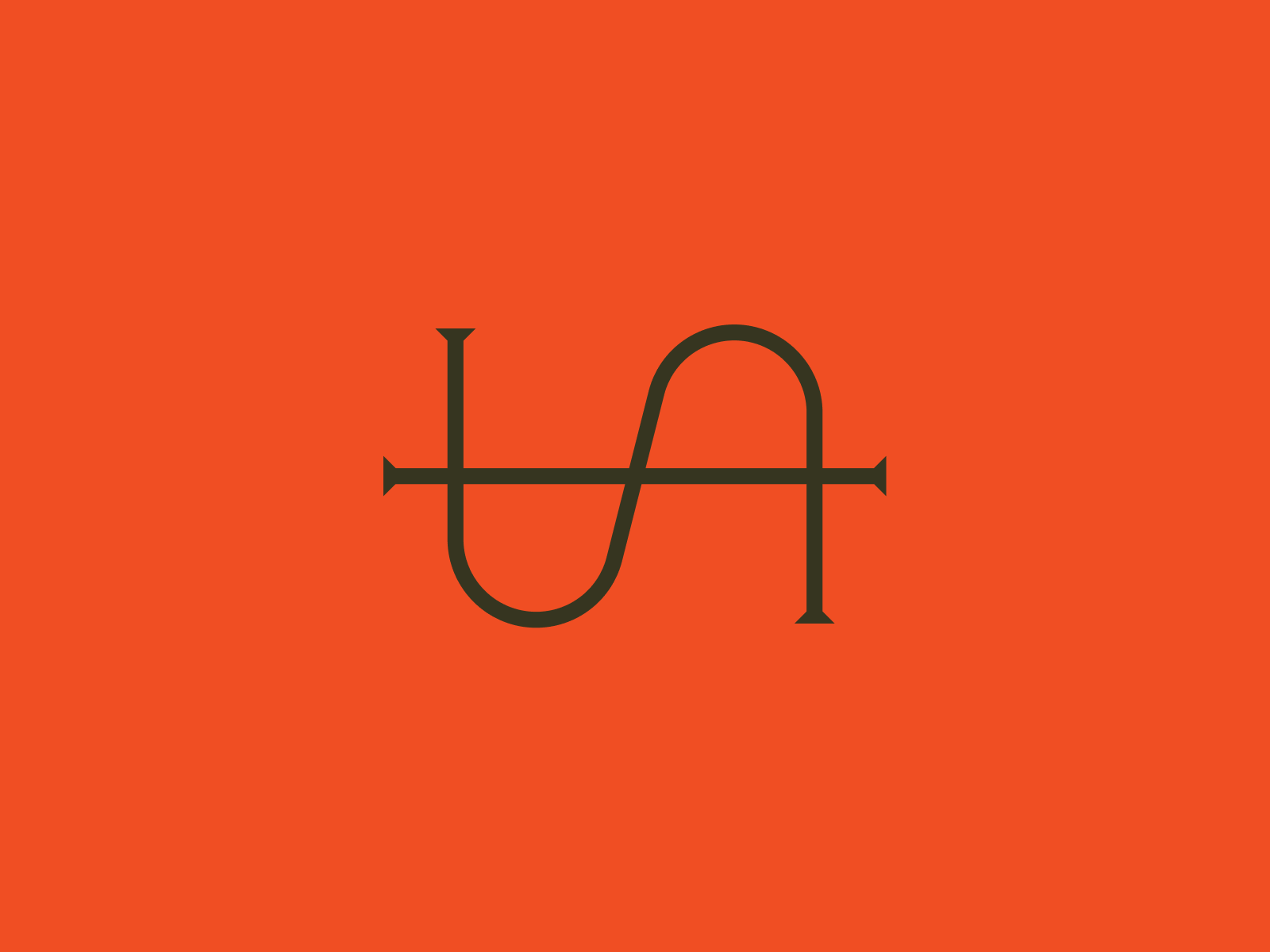Alright, folks, let me tell you somethin' cool. If you’ve ever seen those mind-blowin' artworks where words look the same upside down or sideways, well, that’s called an ambigram. Creating an ambigram might seem like magic at first, but trust me, it’s all about skill, creativity, and a little bit of patience. In this article, we’re gonna dive deep into how to create an ambigram, step by step, so you can impress your friends and maybe even start a new career as a designer. So, grab your pencils, open up your design software, and let’s get started!
Now, if you’re scratching your head thinking, “What exactly is an ambigram?” don’t worry, you’re not alone. An ambigram is basically a word or phrase that can be read in more than one way. It could be flipped upside down, mirrored, or rotated, and it still looks awesome. Designers and artists use ambigrams for logos, tattoos, and even just as standalone art pieces. The possibilities are endless, and once you master the basics, you’ll be creating these bad boys left and right.
Before we jump into the nitty-gritty, let me just say this: creating an ambigram isn’t rocket science, but it does take practice. You don’t need to be a Picasso or a Van Gogh to pull this off. What you do need is a willingness to experiment, a knack for problem-solving, and maybe a cup of coffee or two. Ready? Let’s go!
Here's a quick table of contents to guide you through this article:
- What Is an Ambigram?
- Types of Ambigrams
- Tools You Need
- Step-by-Step Process
- Tips for Beginners
- Software Options
- Common Mistakes to Avoid
- Famous Ambigram Examples
- Ambigram in Design
- Final Thoughts
What Is an Ambigram?
An ambigram is like the Swiss Army knife of typography. It’s a word or phrase that can be read in multiple orientations, whether it’s upside down, mirrored, or rotated. This unique form of art combines symmetry, creativity, and typography to create something truly mesmerizing. Ambigrams are often used in branding, tattoos, and even as standalone art pieces. Think of it as a puzzle where the solution is the word itself.
For example, the word "love" can be designed in such a way that when you flip it upside down, it still reads "love." Cool, right? Ambigrams aren’t just about flipping letters; they’re about reimagining how we perceive words and letters. So, if you’re ready to level up your design skills, this is the perfect place to start.
Types of Ambigrams
1. Rotational Ambigrams
These are the most common type of ambigrams. A rotational ambigram can be read the same way when rotated 180 degrees. For instance, the word "design" can look identical when flipped upside down. This type of ambigram relies heavily on symmetry and careful letter placement.
2. Mirror Ambigrams
Mirror ambigrams are like looking into a mirror. These designs are created by reflecting the word horizontally or vertically. Imagine writing the word "art" and then flipping it horizontally so it still reads "art." This type of ambigram is all about balance and precision.
3. Stacked Ambigrams
Stacked ambigrams combine multiple words into one design. For example, the words "day" and "night" can be stacked on top of each other in such a way that they both read correctly when viewed from different angles. This type of ambigram requires a lot of creativity and planning.
Tools You Need
Creating an ambigram doesn’t require a fancy setup, but having the right tools can make the process smoother. Here’s what you’ll need:
- Pencils and Paper: Old-school tools are still the best for sketching out your initial ideas.
- Design Software: Programs like Adobe Illustrator or Procreate can help you refine your designs digitally.
- Grid Paper: Grid paper is your best friend when it comes to ensuring symmetry in your designs.
- Reference Books: Books on typography and symmetry can provide inspiration and guidance.
Remember, the key is to start simple and build up from there. You don’t need all the bells and whistles to create a stunning ambigram.
Step-by-Step Process
Now that you know what an ambigram is and the tools you’ll need, let’s break down the process into manageable steps:
1. Choose Your Word
Pick a word or phrase that you want to turn into an ambigram. Keep it short and simple for your first attempt. Words with fewer letters are easier to work with.
2. Sketch Out Symmetry
Use grid paper to sketch out the symmetry of your word. Pay attention to how each letter pairs with its counterpart when flipped or mirrored.
3. Experiment with Shapes
Play around with the shapes of the letters. Sometimes, you’ll need to merge two letters into one to achieve the desired effect. Don’t be afraid to get creative!
4. Refine Your Design
Once you have a rough sketch, refine your design by adding details and cleaning up the lines. This is where your design software can come in handy.
5. Test and Adjust
Flip your design upside down or mirror it to ensure it still reads correctly. Make adjustments as needed until you’re happy with the result.
Tips for Beginners
Creating an ambigram can be challenging, especially if you’re new to design. Here are some tips to help you along the way:
- Start with simple words and work your way up to more complex phrases.
- Practice symmetry exercises to improve your skills.
- Don’t be afraid to erase and start over. Mistakes are part of the learning process.
- Seek inspiration from other ambigram artists, but don’t copy their work.
Software Options
If you’re serious about creating ambigrams, investing in good design software is a smart move. Here are some popular options:
- Adobe Illustrator: A powerful tool for vector graphics and typography.
- Procreate: Ideal for digital artists who prefer working on tablets.
- Inkscape: A free, open-source alternative to Adobe Illustrator.
No matter which software you choose, the key is to practice and experiment until you find what works best for you.
Common Mistakes to Avoid
Even the best designers make mistakes. Here are some common pitfalls to watch out for:
- Ignoring symmetry: Symmetry is the foundation of a good ambigram. If it’s off, the whole design will suffer.
- Overcomplicating the design: Keep it simple, especially when you’re starting out.
- Not testing the design: Always flip or mirror your design to ensure it reads correctly.
Famous Ambigram Examples
Some of the most iconic ambigrams have been created by world-renowned artists. Take a look at these examples:
- “Magic” by John Langdon: A rotational ambigram that became famous after being featured in the movie “Angels & Demons.”
- “Infinity” by Scott Kim: A mirror ambigram that perfectly captures the essence of infinity.
- “Escher” by Douglas Hofstadter: A stacked ambigram that pays homage to the legendary artist M.C. Escher.
Ambigram in Design
Ambigrams aren’t just for fun; they have real-world applications in design. Brands like Adobe and Coca-Cola have used ambigrams in their marketing campaigns to great effect. Ambigrams can also be used in:
- Logo Design: Create a logo that stands out with an ambigram.
- Tattoo Art: Ambigram tattoos are becoming increasingly popular among design enthusiasts.
- Product Packaging: Add a unique twist to your product packaging with an ambigram.
Final Thoughts
Creating an ambigram is more than just a fun hobby; it’s an art form that combines creativity, symmetry, and typography. Whether you’re designing for fun or planning to pursue a career in design, mastering ambigrams can set you apart from the crowd. Remember, practice makes perfect, so don’t be discouraged if your first attempts don’t turn out exactly as planned. Keep experimenting, keep learning, and most importantly, keep having fun!
Now, it’s your turn. Grab your tools, choose your word, and start creating your own ambigram masterpiece. And don’t forget to share your work with the world. Who knows? Your design might just inspire someone else to try their hand at ambigram art. Happy designing, folks!


